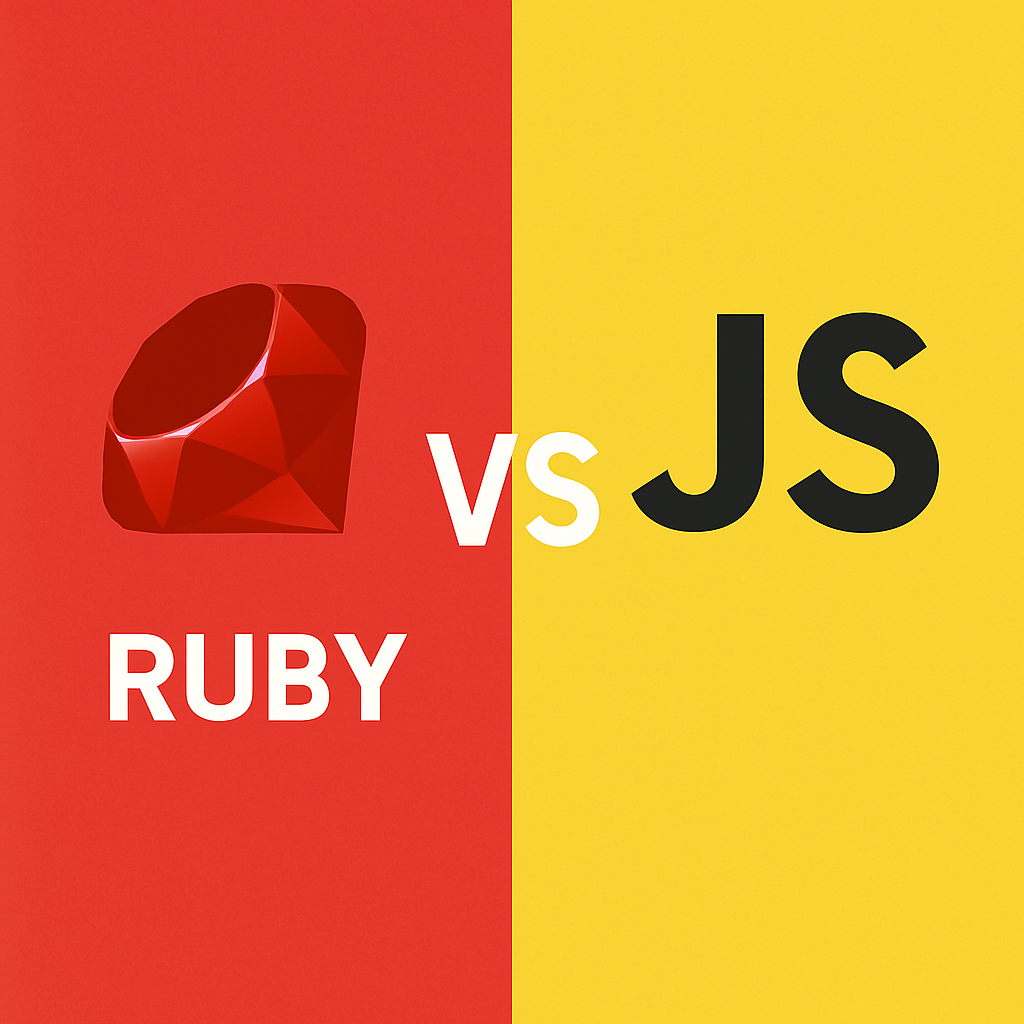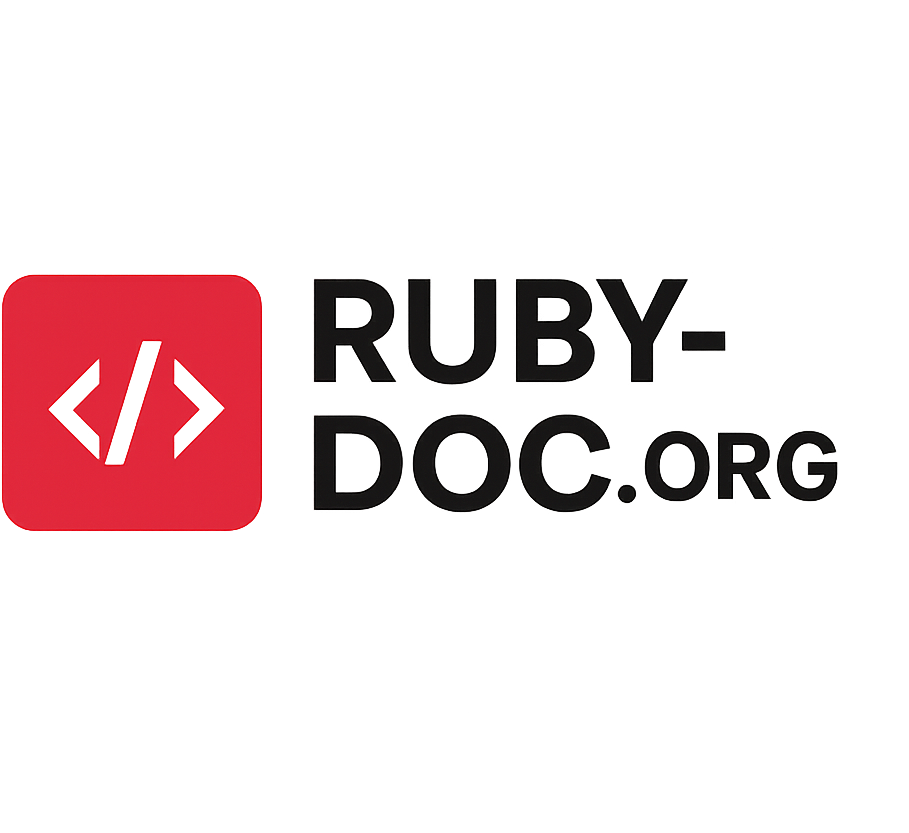
In the ever-evolving world of software development, programming languages come and go—but a few stand the test of time. Ruby and JavaScript are two such languages that have established themselves as cornerstones of modern programming. Both are high-level, dynamic, and widely used across the globe. But when it comes to Ruby vs JavaScript, how do they compare in 2025?
Whether you’re a budding developer deciding which language to learn first or a seasoned engineer exploring a new tech stack, this deep-dive article explores every important aspect of Ruby and JavaScript—from syntax and performance to frameworks, community, and job prospects.
1. Overview of Ruby and JavaScript
Ruby
Ruby is a dynamic, object-oriented programming language created in the mid-1990s by Yukihiro “Matz” Matsumoto in Japan. The language emphasizes simplicity and productivity, with an elegant syntax that is easy to read and write.
Ruby rose to global prominence with the release of Ruby on Rails in the mid-2000s, a full-stack web application framework that revolutionized how developers built web applications.
JavaScript
JavaScript, on the other hand, was created by Brendan Eich in 1995 while working at Netscape. Originally intended to add interactivity to web pages, it has grown into one of the most widely-used programming languages in the world. JavaScript now powers front-end development, server-side applications (via Node.js), mobile apps, desktop software, and even IoT devices.
2. Syntax and Language Philosophy
Ruby Syntax
Ruby syntax is clean, expressive, and often reads like English. It supports everything-is-an-object philosophy, and even simple data types like numbers and strings are treated as objects.
Example:
rubyCopyEdit5.times do
puts "Hello, world!"
end
Ruby prioritizes developer happiness. Its elegant syntax encourages creativity, reducing boilerplate and increasing readability.
JavaScript Syntax
JavaScript’s syntax is C-like and more verbose compared to Ruby. It supports both object-oriented and functional programming paradigms.
Example:
javascriptCopyEditfor (let i = 0; i < 5; i++) {
console.log("Hello, world!");
}
Modern JavaScript (ES6 and beyond) has improved a lot in terms of readability and conciseness with features like arrow functions, destructuring, and async/await.
3. Performance and Speed
Ruby Performance
Ruby is interpreted and not as fast as compiled languages like C or Go. Even in comparison to JavaScript (especially with V8-powered Node.js), Ruby generally performs slower in CPU-bound tasks.
However, Ruby’s performance is more than sufficient for many web applications and APIs, especially when used with performance-optimized frameworks like Rails 7 and caching strategies (e.g., Redis).
JavaScript Performance
JavaScript performance has improved dramatically over the years, thanks to engines like Google’s V8 (used in Chrome and Node.js). JavaScript is typically faster than Ruby, especially in benchmarks for async operations and I/O tasks.
Node.js allows JavaScript to handle thousands of concurrent connections efficiently using non-blocking I/O.
Winner in performance: JavaScript.
4. Use Cases and Ecosystem
Ruby Use Cases
- Full-stack web development (Ruby on Rails)
- Prototyping
- DevOps scripting
- Backend APIs
- Data manipulation (less common now, but still used)
Ruby is particularly favored by startups and entrepreneurs for rapid MVP development.
JavaScript Use Cases
- Front-end development (React, Vue, Angular)
- Backend development (Node.js, Express)
- Mobile apps (React Native, Ionic)
- Desktop apps (Electron)
- Game development
- Browser extensions
- IoT applications
JavaScript’s versatility is unmatched, making it a true full-stack language.
Winner in versatility: JavaScript.
5. Frameworks and Libraries
Ruby Frameworks
- Ruby on Rails – the flagship web framework
- Sinatra – a lightweight web framework
- Hanami – a modular, lightweight alternative to Rails
- Jekyll – static site generator
- Puppet – system administration automation
Ruby on Rails remains one of the most productive frameworks for building web applications quickly with convention-over-configuration principles.
JavaScript Frameworks
Front-End:
- React
- Vue.js
- Angular
- Svelte
Back-End:
- Node.js
- Express.js
- NestJS
- Next.js (full-stack framework)
Other Notables:
- Electron (desktop apps)
- React Native (mobile apps)
- Three.js (3D graphics)
JavaScript has an enormous and constantly evolving ecosystem with libraries for nearly every purpose.
Winner in framework/library ecosystem: JavaScript.
6. Community and Developer Support
Ruby Community
Ruby’s community is known for being welcoming, inclusive, and supportive. Although smaller than JavaScript’s, the Ruby community is active and continues to support gems (Ruby libraries), frameworks, and tools.
Annual events like RailsConf and RubyKaigi continue to bring developers together.
JavaScript Community
JavaScript has arguably the largest developer community in the world. Whether you’re a newbie or an expert, there are countless tutorials, blogs, forums, and open-source repositories to learn from.
Popular meetups, conferences (JSConf, ReactConf), and an abundance of job listings reflect this massive support base.
Winner in community and developer resources: JavaScript.
7. Learning Curve and Beginner Friendliness
Ruby for Beginners
Ruby is often recommended as a first programming language due to its simplicity and readability. It abstracts many complex concepts, making it ideal for absolute beginners.
The “Rails Way” provides strong conventions, allowing beginners to build functioning web apps quickly.
JavaScript for Beginners
JavaScript’s learning curve is steeper, primarily due to:
- Inconsistent browser behavior
- Historical quirks (e.g.,
==vs===) - Asynchronous programming (callbacks, promises, async/await)
That said, modern learning resources and JavaScript tooling have greatly improved. Frameworks like React are beginner-friendly with the right guidance.
Winner for beginner friendliness: Ruby.
8. Job Market and Career Opportunities
Ruby Job Market
Ruby, especially Ruby on Rails, is still in demand but niche compared to JavaScript. Many legacy and startup applications still use Ruby, particularly in industries like:
- SaaS
- E-commerce
- Fintech
- EdTech
However, fewer companies are adopting Ruby for new projects in 2025.
JavaScript Job Market
JavaScript is a dominant force in the job market. Knowing JavaScript opens doors in:
- Frontend development
- Backend development
- Full-stack roles
- Mobile development
- Game development
The demand for JavaScript developers is enormous and still growing in 2025.
Winner in job prospects: JavaScript.
9. Tooling and Development Environment
Ruby Tooling
Ruby developers benefit from tools like:
- RVM/rbenv – Ruby version management
- Bundler – dependency management
- Rails generators – for scaffolding apps
- RSpec – behavior-driven testing
- Pry – advanced REPL and debugging
Ruby development is typically done in command-line-focused environments, often using editors like VSCode or RubyMine.
JavaScript Tooling
JavaScript tooling is vast:
- NPM/Yarn – package managers
- Webpack, Vite, Parcel – bundlers
- ESLint, Prettier – code linting and formatting
- Jest, Mocha, Cypress – testing tools
- Babel – transpiler for modern JS features
JavaScript tooling can be complex, but it’s incredibly powerful and flexible.
Winner in tooling variety: JavaScript.
10. Security Considerations – Ruby vs Javascript
Ruby Security
Ruby on Rails provides built-in protection against:
- SQL Injection
- CSRF (Cross-Site Request Forgery)
- XSS (Cross-Site Scripting)
Its conventions encourage secure-by-default development.
However, performance bottlenecks and outdated gems can introduce vulnerabilities if not regularly maintained.
JavaScript Security
JavaScript is prone to a wide range of security issues, especially in the browser:
- XSS attacks
- Insecure dependencies (common via NPM)
- CSRF in SPAs
- Logic vulnerabilities in REST APIs
The OWASP Top 10 lists many risks commonly encountered in JavaScript-based apps.
Security requires constant vigilance, especially in front-end and Node.js applications.
Winner in out-of-the-box security: Ruby.
11. Popularity and Trends in 2025
According to the Stack Overflow Developer Survey 2025:
- JavaScript remains the most used programming language globally.
- Ruby ranks lower, but still has a strong niche following.
GitHub’s Octoverse 2025 also shows that JavaScript dominates in open-source contributions, with Ruby still contributing significantly to high-profile projects like GitLab and Shopify.
While Ruby is stable and mature, JavaScript is dynamic and constantly evolving.
Winner in current popularity and momentum: JavaScript.
12. When to Choose Ruby vs JavaScript
| Scenario | Ruby | JavaScript |
|---|---|---|
| Rapid MVP development | ✅ | ✅ |
| Frontend interactivity | ❌ | ✅ |
| Backend API for a SaaS app | ✅ | ✅ |
| Building SPAs or PWAs | ❌ | ✅ |
| Learning first programming language | ✅ | ✅ (with guidance) |
| High concurrency or real-time apps | ❌ | ✅ |
| Enterprise-level CRUD app | ✅ | ✅ |
| One-language full-stack development | ❌ | ✅ |
13. Real-World Examples
Ruby in Production
- Shopify – built on Ruby on Rails
- GitHub – originally written in Rails
- Basecamp – created by the makers of Ruby on Rails
JavaScript in Production
- Netflix – uses Node.js and React
- Uber – Node.js for high-performance backend services
- LinkedIn – frontend in JavaScript, backend using Node.js for mobile apps
14. Future Outlook
Ruby in 2025 and Beyond
Ruby continues to evolve, with recent versions improving performance and concurrency (e.g., Ractors in Ruby 3). While it may never return to peak popularity, it remains a reliable and elegant choice for backend systems.
The Ruby community is focusing on performance, tooling, and concurrency improvements.
JavaScript in 2025 and Beyond
JavaScript shows no signs of slowing down. With WebAssembly, Serverless, and React 19 in widespread use, JavaScript continues to lead innovation in web development.
Expect more tooling around AI integration, Edge computing, and streaming UIs using frameworks like React Server Components.
Ruby vs JavaScript—Which Should You Choose?
There’s no definitive answer to the Ruby vs JavaScript debate—it all depends on your goals, your project, and your personal preferences.
- Choose Ruby if you value clean syntax, rapid web app development, and convention-over-configuration.
- Choose JavaScript if you want to work across front-end and back-end, build dynamic apps, and tap into one of the largest job markets in tech.
Both languages have stood the test of time. And in a modern tech stack, you might even use both together—JavaScript on the front-end and Ruby on the backend.
In the end, it’s not about which language is better. It’s about which is better for you.
Read our Ruby vs Go article comparison too!
